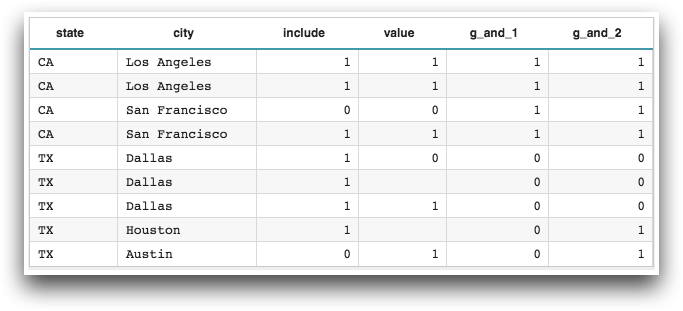g_and(G;S;X)
Returns a boolean value indicating whether all values within a given group are true.
Function type
Vector only
Syntax
g_and(G;S;X)Input
| Argument | Type | Description |
|---|---|---|
G |
any | A space- or comma-separated list of column names Rows are in the same group
if their values for all of the columns listed in If If any of the columns listed in |
S |
integer | The name of a column in which every row evaluates to a 1 or 0, which determines
whether or not that row is selected to be included in the calculation If
If any of the values in
|
X |
|
A column name Note: This column can only contain a 1 or
0 value (or is a computed column that evaluates to such)
for every row.
N/As in |
Return Value
For every row in each group defined by G (and for those rows where
S=1, if specified), g_and returns
an integer value of 1 if all of the values are equal to 1 in
the column listed in X that are in the same group as that row.
If all values for a particular group are N/A, the result is 1.
Sample Usage
<base table="pub.doc.samples.ref.func.g_func_sample_usage_and_or"/> <willbe name="g_and_1" value="g_and(state;include;value)"/> <willbe name="g_and_2" value="g_and(state city;include;value)"/>

